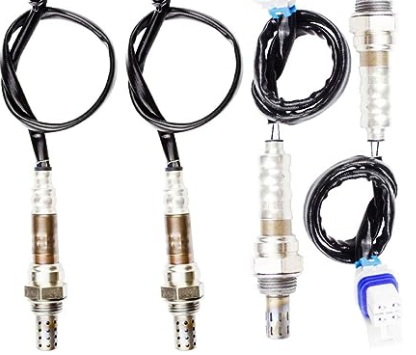Your cart is currently empty!
The Surprising Consequences of Ignoring Your Failing O2 Sensor
In the intricate dance of components that make up your vehicle's engine, one often overlooked player can have far-reaching effects on performance, emissions, and even your wallet. This silent contributor is none other than the Oxygen (O2) sensor. This article is a deep dive into the unexpected repercussions of neglecting a failing O2 sensor. We'll explore its significance, red flags of failure, the potential aftermath, and the prudent steps to take if you suspect your failing O2 sensor.

The Oxygen (O2) Sensor: Unveiling its Role
The Science Behind the Sensor
Within the complex realm of automotive engineering lies the Oxygen sensor – a small but vital device that monitors the oxygen levels in your exhaust gases. This data is transmitted to the engine control unit (ECU), orchestrating the optimal air-fuel mixture for efficient combustion. This seemingly modest task holds the key to fuel economy, engine performance, and emissions control.
Recognizing the Red Flags of a Failing O2 Sensor
Decoding the Signals
Every automotive ailment has its telltale signs, and a failing O2 sensor is no exception. Be on the lookout for subtle hints like diminished fuel efficiency, irregular idling, unexplained engine misfires, and the ominous glow of the "Check Engine" light on your dashboard. These indicators are the sensor's distress signals, indicating an failing O2 sensor,urgent need for attention.
The Domino Effect: Consequences of Ignoring a Failing O2 Sensor
A Chain Reaction of Complications
Dismissing a failing O2 sensor as a minor inconvenience is a costly misjudgment. The immediate consequence is compromised fuel efficiency, as the ECU struggles to balance the air-fuel ratio without accurate sensor data. Beyond that, an untreated failing O2 sensor can escalate emissions, contributing to environmental harm and potential regulatory violations. Worse yet, this negligence can inflict collateral damage on neighboring engine components, eventually leading to more extensive and expensive repairs.
What if the failing O2 sensor: Navigating the Solution
If your vehicle displays any of the aforementioned symptoms, swift action is paramount. Equip yourself with an OBD-II scanner to extract error codes from the ECU, a roadmap to the problematic sensor. Once identified, opt for a quality replacement O2 sensor, ensuring it meets OEM specifications or boasts a reputable aftermarket brand. What if the failing O2 sensor?If the realm of auto repairs isn't your forte, seek the expertise of a qualified mechanic to ensure precise diagnosis and seamless replacement.
Conclusion
In the intricate automotive orchestra, the O2 sensor may be an unsung hero, but its role is far from insignificant. Ignoring the signs of a failing O2 sensor can unravel a cascade of issues that impact not only your vehicle's performance and efficiency but also the environment. A vigilant approach to vehicle maintenance, coupled with a proactive response to sensor troubles, can save you from a host of potential complications and costs down the road. The lesson here is clear: heed the whispers of your O2 sensor, for they carry the weight of your car's well-being and the world it traverses.






Leave a Reply